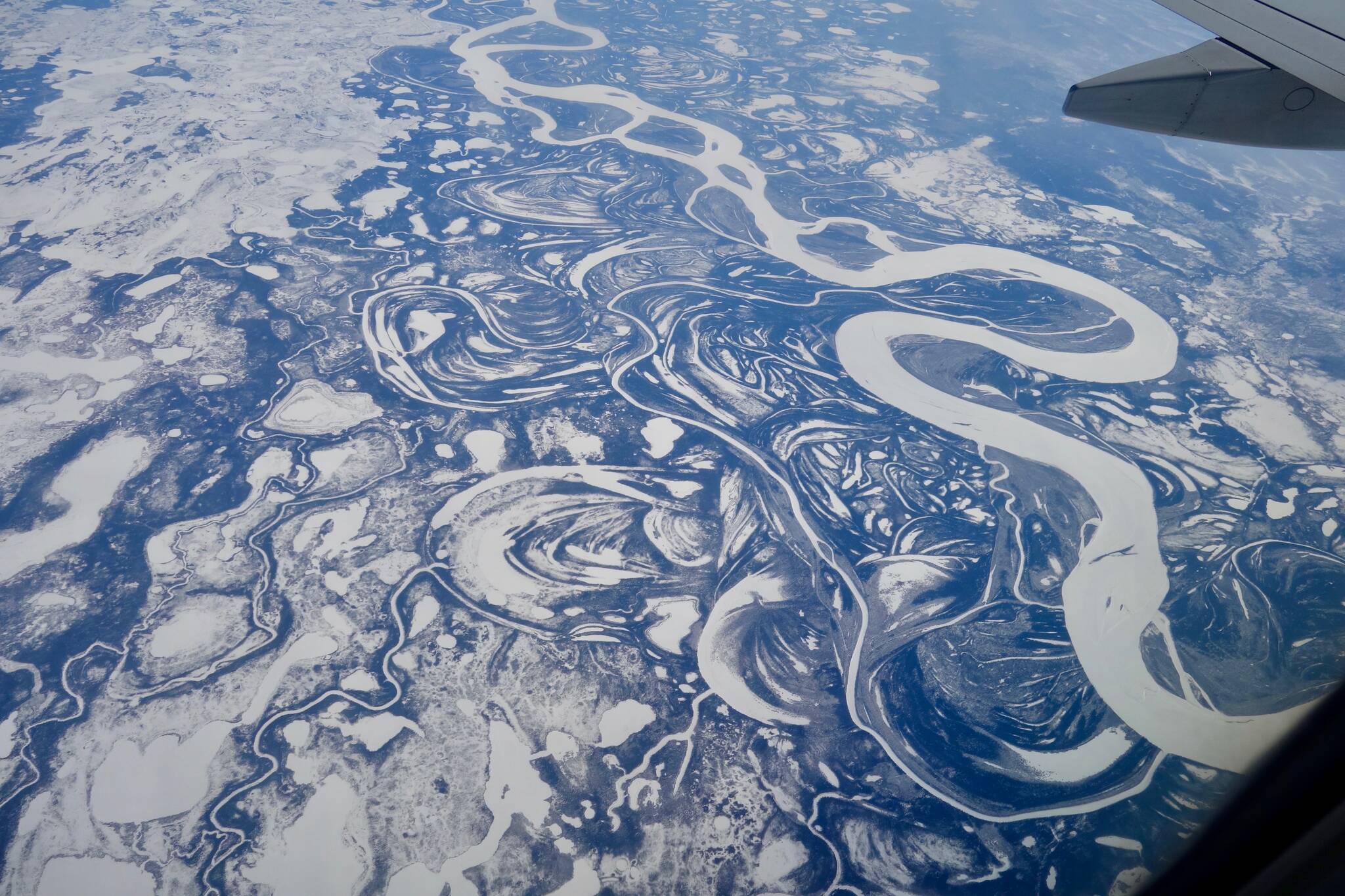As an instructor for Osher Lifelong Learning Institute, I have stood before a group of Alaskans every Tuesday night this November. During the most recent class session of Ned Rozell’s Alaska I asked 17 people what changes they have noticed in this giant peninsula during their time here.
These are long-haul Alaskans: Class members have combined for 747 years of living in the state. The average number of years each of them has lived here is 44!
Last week, a few were talking about changes they could feel as they walked into the Geophysical Institute’s Elvey Building.
The air temperature outside that door was 20 degrees F. The average for Fairbanks for the first 28 days of November 2023 was 15.7 degrees F, much warmer than the long-term November average of 4.1 degrees.
The paucity of stinging air and nostalgia for cars bumping along on wheels squared by 50 below was a common theme.
Sue McHenry remembered when she chose Halloween costumes for her kids that fit over snowsuits, “because it was 25 below.”
Ken Russell visited Kaktovik, a community in northern Alaska, in the early 1990s and saw sea ice hugging the shore in late summer. “But by a decade ago there was no ice to be seen,” he said. “It was 300 miles offshore.”
The dwindling extent and thickness of ice that forms on the ocean off the northern and western coasts of Alaska has been a major reason northern Alaska has warmed at five times the global average since the early 1970s. A dark ocean does not reflect the sun’s energy like blue/white sea ice. It absorbs heat that would have been reflected to space.
Janna Miller was born in Fairbanks on a January day long ago when the temperature dropped to minus 45. That was part of the reason her family soon moved to Chugiak, she said. In that town and most of Southcentral Alaska, she remembers being able to cross-country ski all winter long. Now, she says, it seems like Southcentral experiences four or five “breakups” each winter: Rain falls on the snowpack and wrecks the skiing. Then it gets cold again.
Larry Fogleson and others spoke of the rain-on-snow event in Fairbanks on Dec. 26, 2021 that turned local roads into a skating rink. It also created an inch-thick pane of ice within the snowpack that forced moose to wander the roads and trails.
Linda Casassa was in the Southwest Alaska village of Chuathbaluk in the winter of 2008 or 2009 when the Kuskokwim River ice moved downriver in midwinter. It usually stays locked in place once it freezes. “No elder had seen it before,” she said.
Because a thawed-ground-induced landslide closed the only road into Denali National Park, Krista Holbrook can no longer duplicate a drive she had repeated many times over the years.
Ann Wood O’Brien mentioned how she and her friends could no longer fish for Chinook and chum salmon on the Yukon River due to dwindling numbers of fish. Though she and others often faced fishing restrictions for Chinooks, runs of chum salmon seemed almost infinite less than a decade ago.
Laurel Devaney spoke about how milder Fairbanks winters are more hospitable for birds that now seem to be able to overwinter here, such as golden-crowned kinglets. Tennessee warblers are now also breeding in Alaska (while still overwintering in Central America).
Barb Pierson guides groups of Alaska visitors north from Fairbanks into the Arctic. During the recent past, she has noticed the enhanced growth of dwarf birch shrubs north of the Brooks Range. She has also watched as the larval stage of aspen leaf miners have etched leaves from Fairbanks to as far north as aspens grow along the Dalton Highway.
All of the seasoned Alaskans noticed what scientists call “Arctic amplification,” the accelerated warming at extreme northern latitudes. But they agreed that all is not yet lost. Nor is it all unpleasant.
“The temperature is warmer now, and I like it,” said Carol DeVoe, who has lived in Alaska since 1961. “I get outside every day and I don’t like (the extreme cold) that lasts for weeks.”
Doug Best said that his air-cooled Volkswagen bug would probably be more feasible now than it was in the frigid 1970s, when he set the car on fire trying to keep the battery warm.
I had hesitated to talk about climate change because I had figured it might bum people out, but my audience didn’t get too worked up.
Mike Potter — the class leader with 81 years in the state — summed up the mood when asked what he thought about the many changes he has seen.
“I’m the type of person who accepts what’s there,” he said.
• Since the late 1970s, the University of Alaska Fairbanks’ Geophysical Institute has provided this column free in cooperation with the UAF research community. Ned Rozell is a science writer for the Geophysical Institute.

